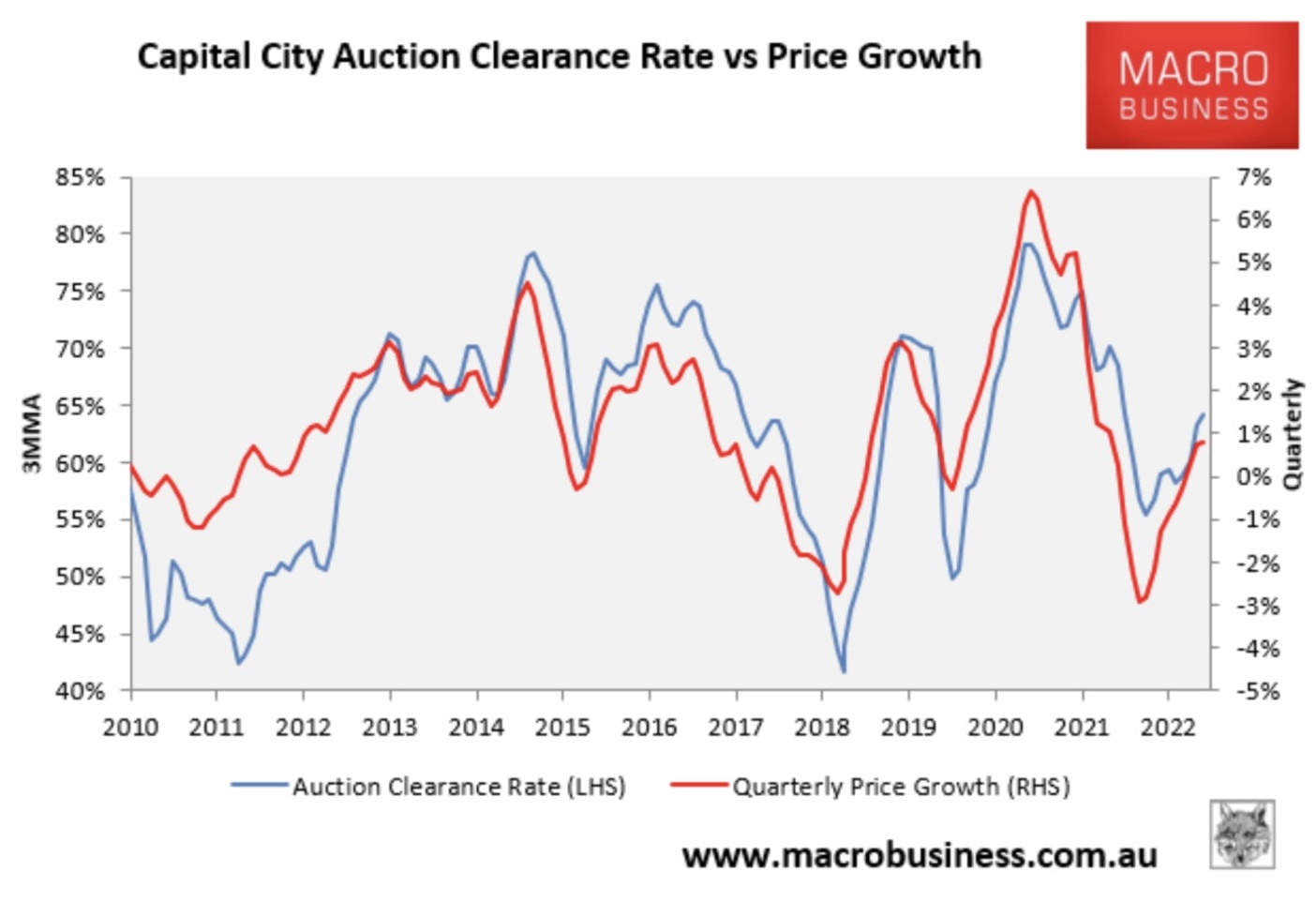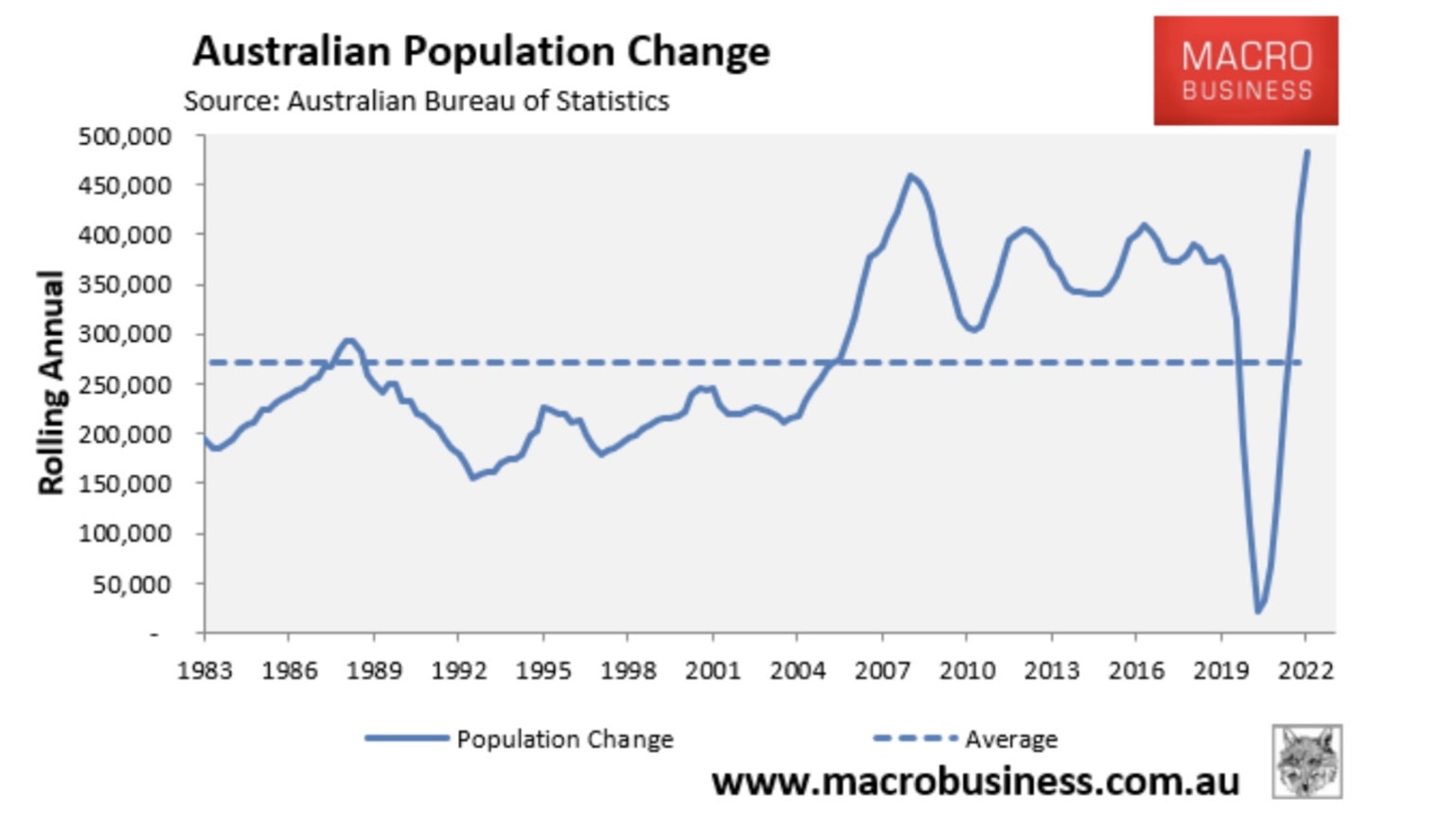What the RBA’s latest hike means for Australian house prices

Rates rises have almost double mortgages for some Australians but something strange is happening to Aussie house prices.
Australia’s house price recovery continued in April, with PropTrack’s dwelling values index recording a 0.1 per cent monthly rise to be up 1.4 per cent from its December trough.
Sydney, the market which led the downturn, is now leading the recovery, with house prices rising 1.7 per cent year to date.
The unexpected rebound in house prices has been matched by the auction market, where clearance rates have also bounced from their December low.
The housing rebound has caught most analysts by surprise since it has occurred despite a 0.25 per cent official interest rate increase in early February and another 0.25 per cent increase in early March.
The Reserve Bank of Australia’s (RBA) ten straight interest rate rises have almost doubled mortgage rates and reduced borrowing capacity by around 30 per cent.
This is the steepest drop in borrowing capacity on record, and it would normally be associated with a major drop in property values.
In previous cycles, home values did not rebound until the RBA began cutting interest rates.
An extreme shortage of listings, skyrocketing rents, and unprecedented immigration are currently outweighing the RBA‘s aggressive rate hikes, fuelling the unexpected price rebound.
At the same time, rents across the combined capital cities are soaring by double digit rates amid record low vacancy rates.
Australia’s population grew by 482,000 in 2022, driven by record NOM:
In updated forecasts released last Friday, the Australian Treasury projected NOM to reach 400,000 this fiscal year and 315,000 in 2023-24.
That’s way above the 235,000 annual NOM forecast in the September federal budget.
In short, the above factors have created a ‘fear of missing out’ (FOMO) as Australians desperately try to escape the broken rental market, which is driving the price rebound.
RBA to spoil the party?
Last Tuesday afternoon, the RBA went against most economists and the financial market’s prediction, and lifted the official cash rate (OCR) another 0.25 per cent to 3.85 per cent.
In his statement, Governor Phil Lowe noted that “inflation in Australia has passed its peak, but at 7 per cent, that’s still too high and it will be some time yet before it is back in the target range”.
“Given the importance of returning inflation to target within a reasonable time frame, the Board judged that a further increase in interest rates was warranted”.
Governor Lowe is especially concerned about ‘sticky’ services inflation, noting it “is still very high and broadly based and the experience overseas points to upside risks”.
Governor Lowe also flagged that “some further tightening of monetary policy may be required to ensure that inflation returns to target in a reasonable time frame, but that will depend upon how the economy and inflation evolve”.
Before ending his statement with “the Board remains resolute in its determination to return inflation to target and will do what is necessary to achieve that”.
Although the nascent house price rebound wasn’t specifically cited as a reason for the rate hike, it might have played a minor role, given rising home prices are typically accompanied by a lift in consumer sentiment, supporting consumption and potentially keeping inflation higher for longer.
House price outlook still positive
Despite the RBA’s shock rate hike, the outlook for Australian house prices remains positive.
Interest rates are likely close to their peak, even though the RBA could hike one more time.
Record immigration will continue to raise demand for housing, both to buy and to rent.
This unprecedented population surge has arrived at the same time as Australia’s housing construction industry is on its knees, suffering from widespread company collapses amid soaring materials prices and financing (interest rate) costs.
The upshot is that Australia’s housing crisis will continue to worsen over the foreseeable future as record immigration-driven demand collides with falling housing supply.
The extent of the housing crisis facing Australia is neatly encapsulated in the next chart from AMP Capital’s chief economist Shane Oliver, which shows the gaping housing shortage confronting the nation.
In turn, the rental market will tighten even further, encouraging more people to buy.
Finally, foreign buyer demand will continue to rise, led by China, which will provide further support to house prices.
When the RBA does finally cut rates, house prices will boom
The substantial rebound in immigration, auction clearances, and prices demonstrates that demand for housing remains strong.
The only thing holding back prices is the steep drop in borrowing capacity because of the RBA’s 3.75 per cent of interest rate rises.
Once the RBA begins cutting the OCR, most likely at the end of the year, borrowing capacity and mortgage demand will lift.
There is also the strong possibility that the Australian Prudential Regulatory Authority (APRA) will follow suit by lowering its mortgage serviceability buffer from 3 per cent, increasing borrowing capacity and demand even further.
Most of the ingredients are, therefore, in place for the next house price boom.
All that is needed is for the RBA and APRA to commence their easing cycle, which will launch home prices into 2024.
Article Credited to Leith van Onselen, news.com.au
We would appreciate your support by following us on Facebook, Linkedin, Instagram-Oracle and Instagram-Kountable for more great tips, support and the latest tax news and headlines!
Oracle Accounting & Wealth is located at Suite 31, 89-97 Jones Street ULTIMO NSW 2007. Phone: 02-9715 2977
Liability limited by a Scheme approved under Professional Standards Legislation.
Disclaimer
The information in this newsletter / factsheet is factual but general in nature. It should not and is not to be construed as advice at any level whatsoever. Because it contains general information that has not been tailored to your personal circumstances it may not be suitable information for you. You must always seek personal financial or taxation advice prior to acting on this information. Further, as many of the comments in this newsletter / factsheet are general in nature, anyone intending to apply the information to practical circumstances should seek professional advice to independently verify their interpretation and the information’s applicability to their particular circumstances.


